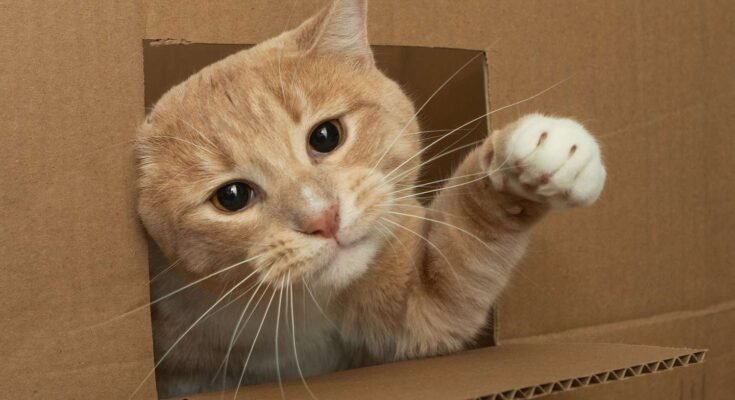Law of Impact B.F. Skinner’s administrator trim, and doctor Edward Thorndike. The law of impact expresses that reactions that produce a positive outcome in a given circumstance will be rehashed in that specific circumstance, while responses that produce an ominous result in a given circumstance won’t be rehashed in that.
<strong>Best Ketchup Alternative?</strong> | 5 Advantages of Using Data in Communication in Digital Age
Get to know more here at https://nationalparkss.com/
Presentation Of The Law Of Impact
Though today B.F. Skinner and Operant Embellishment are known for exhibiting that we learn considering the outcomes of our exercises, a thought in view of Edward Thorndike’s initial responsibilities to the mind study of learning. The law of impact – generally called Thorndike’s law of impact – is gotten from Thorndike’s examinations of animals, especially felines.
Thorndike put a cat in a riddle box with a little change aside. The cat can exit by crushing the switch. Thorndike then put a piece of meat outwardly of the box to ask the cats to dump, and how lengthy he eliminated the feline to escape the case. On his most noteworthy endeavor, the little cat will coincidentally press the switch. Nevertheless, considering the way that after each switch press the feline was repaid with two autonomies and food, each time the preliminary was continued, the cat seemed to answer all the more rapidly to the switch. Thorndike’s suspicions in these tests drove him to present the law of impact, which was conveyed in his 1911 book Animal Information. The law had two segments.
Motivates a positive consequence of this, communicated by the law of impact: “Of the numerous responses made to a comparative situation, those that follow or purposefully follow the satisfaction of the animal, considering everything, Circumstance.” all the more perpetually connected to them, so that when it is rehashed, they will undoubtedly rehash.”
Of the exercises that instigate appalling outcomes, the law of impact communicated: “Those [reactions] that go with or follow the misery of the animal, considering everything, its relationship with everything.” Thorndike finishes up his speculation by saying, “The more recognizable satisfaction or uneasiness, the more grounded or more fragile [the] connection between the reaction and the circumstance.”
Thorndike changed the law of impact in 1932 in the wake of observing that the two provisos were not similarly adequate. They found that while reactions with positive results or rewards commonly fortified the connection between condition and reaction, reactions with troublesome results or discipline just hardly debilitated the connection between condition and reaction.
Get to know more about national park in tennessee
Instances Of The Law Of Impact, In Actuality
Thorndike’s speculation displayed the manner in which individuals learn, and we can by and large see this at work. For instance, suppose you’re an understudy and you seldom talk in class, regardless of the way that you know the answers to the educator’s request. Regardless, the educator makes a request that no other person replies, so you momentarily lift your hand and offer a precise response. The educator esteems your feedback and energizes you. By and by, at whatever point you’re in class and you know the solution to an educator’s request, lift your hand once more, trusting that in the wake of giving the right reaction, you’ll feel valued by your teacher. By the day’s end, because your reaction to the circumstance has delivered positive outcomes, there is an expanded opportunity that you will return to your reaction.
Results For Administrator Embellishment
Thorndike’s law of impact is early speculation of trim. It is a mediation overhaul reaction model since nothing else occurs between remedy and criticism. In Thorndike’s assessments, the cats were permitted to work without restrictions and made an association between pressing the holder and the change to finish their opportunity. Skinner zeroed in on Thorndike’s thoughts and spearheaded tantamount tests that included putting the animals in his form of a riddle box with a switch (routinely called a Skinner box).
Skinner offered help for Thorndike’s theory. In operant trim, unequivocally upheld approaches to acting will undoubtedly be rehashed and more counterproductive to be made than the ominous approach to acting. An indisputable line can be drawn between operant trim and the law of impact, mirroring Thorndike’s effect on both operant embellishment and behaviorism.
The Law Of Impact In Brain Research
The law of impact guideline created by Edward Thorndike recommended that reactions firmly followed by fulfillment will turn out to be solidly connected to the circumstance and thusly bound to repeat when the circumstance is rehashed.
On the other hand, in the event that the circumstance is trailed by uneasiness, the associations with the circumstance will become more fragile, and the way of behaving of reaction is less inclined to happen when the circumstance is repeated.1
Envision that you show up sooner than expected to work one day unintentionally. Your manager notification and gestures of recognition your ingenuity. The applause encourages you, so it supports the way of behaving.
You fire going to work somewhat early every day to continue to accept your supervisor’s acclamations. Since a satisfying outcome followed the way of behaving, the activity turned out to be bound to be rehashed from here on out.
More Models
In the event that you review and, get a passing mark on a test, you will be bound to read up for the following test.
On the off chance that you try sincerely and, get an advancement and increase in salary, you will be bound to keep on investing more energy at work.
In the event that you run a red light and, get a traffic ticket, you will be less inclined to defy traffic signals from here on out.
Disclosure
While we frequently partner the possibility that outcomes lead to changes in conduct with the course of operant molding and B.F. Skinner, this idea has its foundations in the early work of analyst Edward Thorndike.2
In his trials, Thorndike used what is known as puzzle boxes to concentrate on how creatures learn.
The cases were encased yet contained a little switch that, when squeezed, would permit the creature to get away. Thorndike would put a feline inside the riddle box and afterward place a piece of meat fresh.
He would then notice the creature’s endeavors to get away and get the food. He recorded what amount of time every creature required to sort out some way to liberate itself from the crate.
At last, the felines would press the switch, and the entryway would open so the creature could get the award. Despite the fact that first squeezing the switch happened basically unintentionally, the felines turned out to probably rehash it since they had gotten an honor following playing out the activity.
Thorndike noticed that with every preliminary, the felines turned out to be a lot quicker at opening the entryway. Since squeezing the switch had prompted an ideal result, the felines were significantly more prone to play out the way of behaving again in the future.1
Thorndike named this the “Law of Impact,” which proposed that when fulfillment follows an affiliation, it is bound to be rehashed. On the off chance that a horrible result follows an activity, it becomes doubtful to be rehashed.



